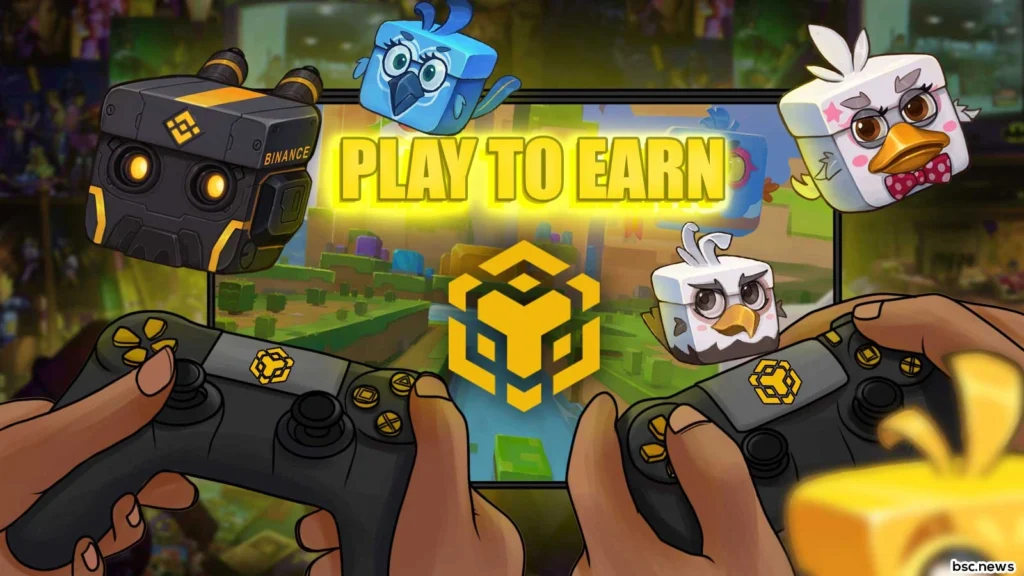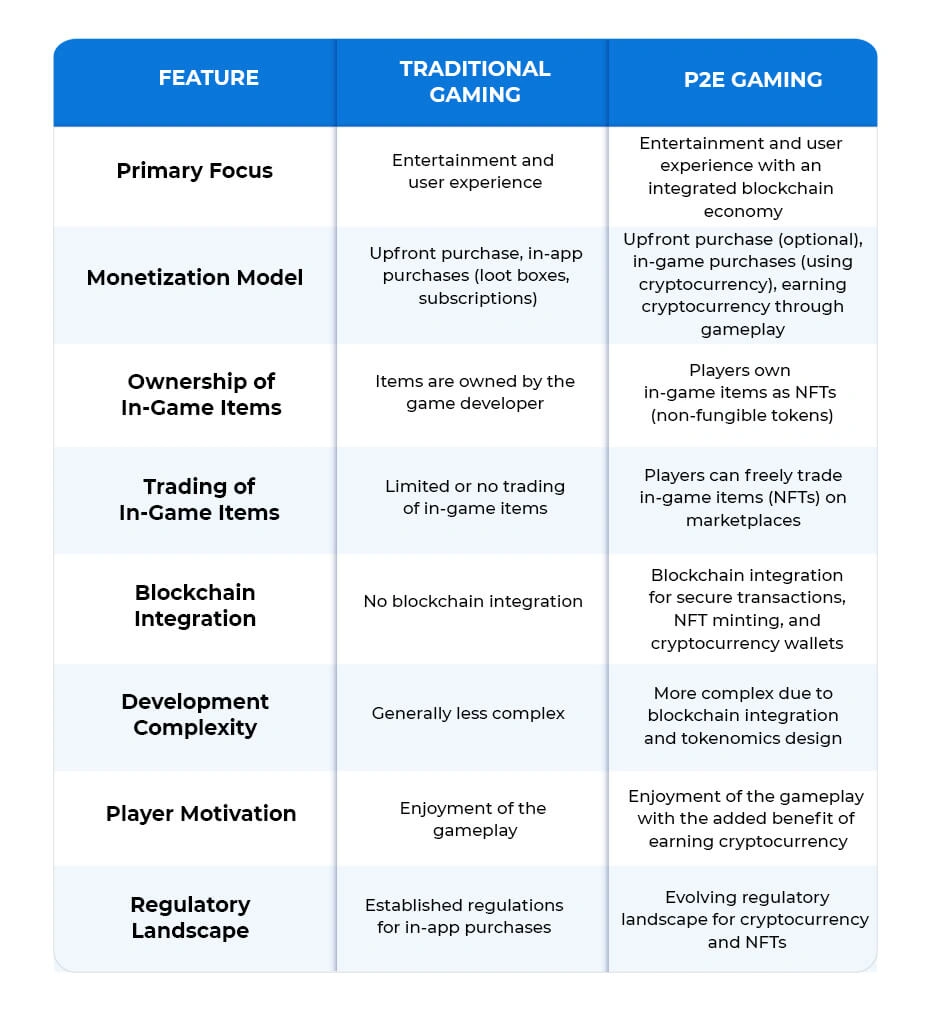Play to Earn Crypto Games: Turning Game Time into Income in 2025
In recent years, a new category of video games has emerged—one that lets players earn real money through digital rewards. Known as play to earn crypto games, or P2E for short, these blockchain-based platforms allow gamers to collect cryptocurrency or trade digital items just by participating in gameplay.
What started as a niche within the crypto space has grown into a global movement. From battle-based card games to virtual land ownership and sci-fi roleplaying, P2E titles are pushing the boundaries of how gaming, digital assets, and income streams come together.
This beginner’s guide breaks down what play-to-earn games are, how they work, and what players should know before getting started.
What Does “Play to Earn” Really Mean?

Credit from Dignited
Traditional games reward players with experience points, unlockable items, or in-game currencies. However, these assets typically hold no value outside the game’s ecosystem. If the game server shuts down or the player stops playing, those rewards are essentially lost.
In contrast, play-to-earn games are built on blockchain technology, which records asset ownership securely on a decentralized network. Items earned in the game—such as characters, weapons, skins, or tokens—can be bought, sold, or traded like other digital assets. They are often stored in the form of non-fungible tokens (NFTs) or cryptocurrencies, giving them real-world market value.
What this means in practice is simple: time and skill in a game can now translate to financial gain.
The Role of Blockchain, Crypto, and NFTs
Understanding how P2E games function requires a basic grasp of the technologies behind them.
Blockchain acts as the infrastructure. It records every in-game transaction, asset transfer, and contract execution, making it tamper-proof and transparent. This also enables smart contracts, which automatically carry out predefined actions—like distributing rewards—without the need for a middleman.
Cryptocurrencies are used as in-game currencies or rewards. Players earn tokens (e.g., AXS, ILV, SAND) which can often be exchanged for Ethereum, Bitcoin, or even fiat currencies depending on the platform.
NFTs give players unique ownership of digital items. These items are not interchangeable (non-fungible), making each one distinct and tradable. If you win a rare sword or unlock a custom avatar, you can sell it on third-party NFT marketplaces.
Examples of Popular P2E Games
Here’s a snapshot of some of the most recognized P2E games in 2025, their blockchain foundations, and what makes them notable.
| Game Title | Blockchain | Tokens Used | Key Features |
|---|---|---|---|
| Axie Infinity | Ronin | AXS, SLP | Battle pets, breeding system, NFT trading |
| Illuvium | Immutable X | ILV | Open-world RPG with collectible creatures |
| The Sandbox | Ethereum | SAND | Virtual real estate and content creation |
| Star Atlas | Solana | ATLAS, POLIS | Space-themed strategy and economic exploration |
| Big Time | Ethereum (L2) | Cosmetic NFTs | Multiplayer RPG with time-travel mechanics |
Each of these games integrates crypto elements differently, but they all allow players to convert time and achievements into tradeable or sellable assets.
Why Players Are Drawn to P2E Games
The appeal of play-to-earn games isn’t just in making money—it’s also about owning your progress. Unlike conventional games where assets are locked in centralized servers, P2E gives players control. You can take your items to a different platform, hold them in a crypto wallet, or sell them independently.
In countries with limited employment opportunities or currency instability, P2E games have even become supplemental income sources. During the height of Axie Infinity’s popularity, some players in the Philippines and Venezuela earned more from the game than from local jobs.
Even beyond financial gains, P2E communities often form strong ecosystems. Players participate in governance decisions, contribute to game development feedback, and support each other through guilds or DAOs (Decentralized Autonomous Organizations).
How to Get Started with Play to Earn Crypto Gaming
For beginners, starting can feel overwhelming. But the process is becoming more user-friendly. Here’s a simplified path:
- Set up a digital wallet – Tools like MetaMask or Phantom are commonly used depending on the game’s blockchain.
- Purchase crypto – You may need Ethereum, Solana, or the game’s native token to begin.
- Connect wallet to the game – Most blockchain games require wallet integration to verify ownership.
- Start playing – Depending on the title, you may begin earning tokens or collecting NFT assets right away.
- Trade or hold your assets – Use in-game marketplaces or external platforms like OpenSea to trade.
It’s important to note that some games have entry costs. For example, Axie Infinity once required three NFTs to start playing, which at its peak cost over USD 1,000—though prices have since decreased and free-to-play models are emerging.
What Are the Main Benefits of Play to Earn Crypto Games?

Credit from Antier Solutions
Play-to-earn games offer more than just the chance to make money:
- Asset Ownership: Players own what they earn. Unlike digital items stored in a central server, blockchain assets are tied to your wallet.
- Cross-Platform Trading: NFTs and tokens can often be traded outside the game environment, offering more liquidity.
- Global Accessibility: Anyone with a smartphone or laptop and internet access can participate.
- Financial Inclusion: Games can serve as entry points into broader crypto adoption and digital finance.
Risks and Challenges to Keep in Mind
While the upside can be exciting, there are clear risks beginners need to be aware of.
- Market Volatility: Token prices fluctuate constantly. A profitable game today might offer lower returns tomorrow due to token inflation or reduced demand.
- Security Threats: Hacks, phishing, and wallet breaches are common. In 2022, Axie Infinity’s bridge suffered a $600 million hack.
- Entry Barriers: Some games require expensive NFTs to begin. Without initial capital or “scholarships” from guilds, participation can be limited.
- Regulatory Gray Areas: Crypto gaming is still under legal scrutiny in many regions. Taxation rules also vary by jurisdiction.
- Economic Sustainability: If too many players cash out and not enough new ones join, the game economy may collapse.
Understanding these risks is crucial. Like any financial venture, research and caution go a long way.
Is Play-to-Earn a Sustainable Model?
The long-term future of P2E gaming will depend on several factors. Early models were often criticized for focusing too much on earning potential and not enough on gameplay quality. Developers are now shifting toward hybrid systems—sometimes called “play and own”—where the focus is on enjoyable gameplay first, with ownership and income as a bonus.
Successful P2E games going forward will likely need to:
- Offer free-to-play access
- Introduce skill-based or tiered earning
- Create balanced tokenomics that prevent inflation
- Foster engaged, long-term communities
Projects like Guild of Guardians, Shrapnel, and Ember Sword are experimenting with these approaches.
Final Thoughts on Play to Earn Crypto Games
For newcomers, play to earn crypto games offer a compelling intersection between gaming and finance. They introduce a way to monetize time and skill while engaging with emerging blockchain technology. But like any new space, it comes with uncertainties—economic, technical, and legal.
If you’re curious, start small. Join free-to-play titles, read whitepapers, ask questions in community forums, and learn the basics of crypto wallets. Think of it less as a get-rich-quick strategy and more as a way to explore how digital economies are evolving.
Play-to-earn is still young. But its influence on gaming, digital assets, and online work is already visible—and growing.




